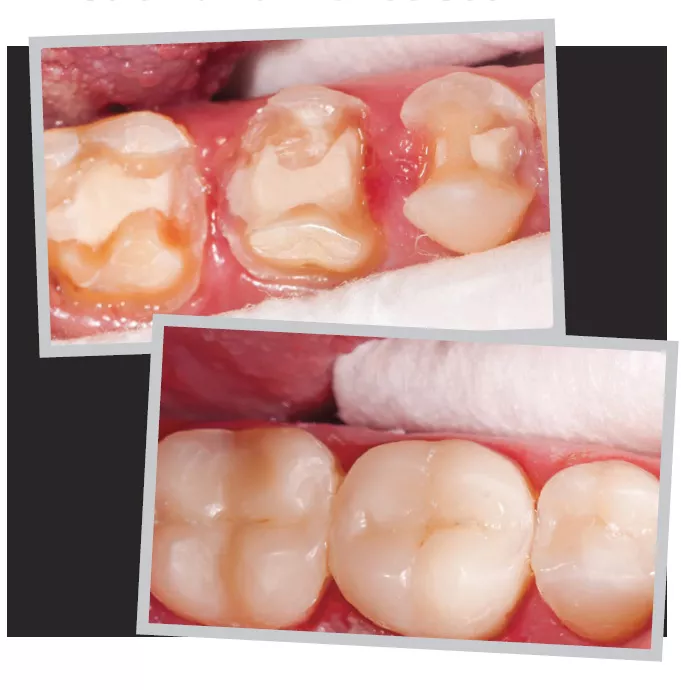HOWARD STRASSLER, DMD
Dr. Robert Ibsen was a composites pioneer whose story remains relevant to every innovative dentist.
DO YOU TAKE bonding for granted? Anyone who graduated from dental school later than 1980 knows composite resins only in the context of adhesive bonding. This is true across the panoply of dental products and techniques: Before too long, I’d wager, some dental students won’t even know what radiographic film is.
Much of dentistry’s history, alas, can no longer be found in textbooks. Too often, the stories of our profession’s true innovators are lost. I graduated in the mid-1970s and have been lucky to have witnessed so much positive change. I am not a dental futurist, but I have known several — one titanic example of which we lost May 14 when Dr. Robert Ibsen, the founder of DenMat, passed away at age 84.
Bob was a friend and a mentor, easily one of the five professional influences who have meant the most to me over the years. Although he was not the father of adhesive dentistry as we know it today — that would be Michael Buonocore of Eastman Dental Center — Bob educated innumerable clinicians in the ways of adhesives and techniques. For most people in practice in his heyday, there was just too great a risk that a certain technique wouldn’t work. Bob coauthored the first adhesive dentistry textbook in 1974, and the many articles he wrote on composites and adhesion practically made up a graduate course all their own.
I was in dental school when the first composite bonding systems appeared. Etch the enamel with phosphoric acid, then wait. Place acid on tooth — wait, you can’t do that; acids cause caries! More than one faculty member, critical of such techniques, refused to supervise me in the clinic. So I pored over journal articles and attended meetings to learn more.
My first research project involved using bonded composite resins to splint teeth instead of cast gold lingual splints cemented and then screwed in with pins. These bonded splints didn’t last long, but they did stabilize periodontally compromised teeth for up to 18 months. Now, of course, we have fiber-reinforced composite resin splints that are durable and reparable — and as such we take bonding for granted, having forgotten the risk takers who got us from point A to point B and beyond in the first place.
How did Bob Ibsen make such a difference? His earliest published work and lectures on first-generation composites preached conservative, minimally invasive dentistry — an idea not widely accepted at a time when sealants were in their infancy. So in 1974, Bob founded DenMat to provide complete systems for adhesive restorative dentistry.
Among his achievements: developing one of the first flowable composite resins and inventing Rembrandt, a tooth- and composite-resin-safe whitening paste. One day, while trying to develop a better composite resin, Bob left a few drops of a chemical reagent, a liquid silane, on a glass slab. He mixed an experimental selfcure composite onto the slab and let it set. When he tried to remove it, it pulled the surface of the glass up with it — and porcelain repair material was born.
This silane technique would enable better bonding of thin porcelain laminates to teeth — porcelain veneers, that is, which at the time (the early 1980s) were only barely known among dentists. Bob’s efforts, through both DenMat and continuing education, trained thousands of dentists on aesthetic diagnosis, treatment planning and treatment with minimally invasive porcelain veneers.
In 1984, Bob held a press conference in New York City to announce the debut of Cerinate veneers. I was proud to be there. Twenty years later he did the same, this time for Lumineers, and soon brought advertising for these techniques and products directly to patients. To some dentists, the idea of these ads appearing in reception-area magazines was distasteful and unprofessional. Today, of course, we’re inundated with such ads. Having marketed Rembrandt, Bob knew that these tactics were a great way to inform and educate the public. His entrepreneurial acumen was rewarded in 2004, when Gillette bought Rembrandt for its Oral-B division.
Bob’s earliest published work and lectures on the first generation of composites preached dentistry that was conservative and minimally invasive, an idea not widely accepted when sealants were in their infancy.
We should never take these innovations for granted. It’s right to be hesitant, even skeptical, about new materials, devices and procedures. Yet the bountiful state of restorative techniques, among much else, can be credited to our industry’s most prescient visionaries. Bob wasn’t the only one to pursue this sort of thing, but as a master clinician and inventor, he was one of the best. Comb today’s CE programs and look for those with a similarly futuristic outlook. The spiritual heirs of Dr. Robert Ibsen are out there, helping propel dentistry headlong into an exciting future.
HOWARD STRASSLER, DMD is a professor and the director of operative dentistry at the University of Maryland School of Dentistry. He practices in Pikesville, Maryland.
Sticking to It: The Evolution of Adhesives

IF YOU WERE to tally the procedures a general practice provides (excluding your hygienists and prophys), likely 80 percent of them require adhesive restorative dentistry. According to the most recent data from the American Dental Association, clinicians place nearly 150 million composite restorations and sealants a year. A 2012 study estimated that some 261 million direct composite restorations were placed worldwide.
Even dental schools are increasingly teaching the use of composite resin to restore posterior teeth. A recent survey of 46 schools revealed that 63 percent of them no longer teach the use of amalgam for posterior restorations. For the direct placement of single-tooth restorations, three materials and techniques are critical: adhesives, composite resins and light curing.
Although it’s important for clinicians to understand that no one material or tactic alone can possibly ensure a successful restoration, click on the QR code at right to get a broad overview of the evolution, and the current condition, of adhesives.




